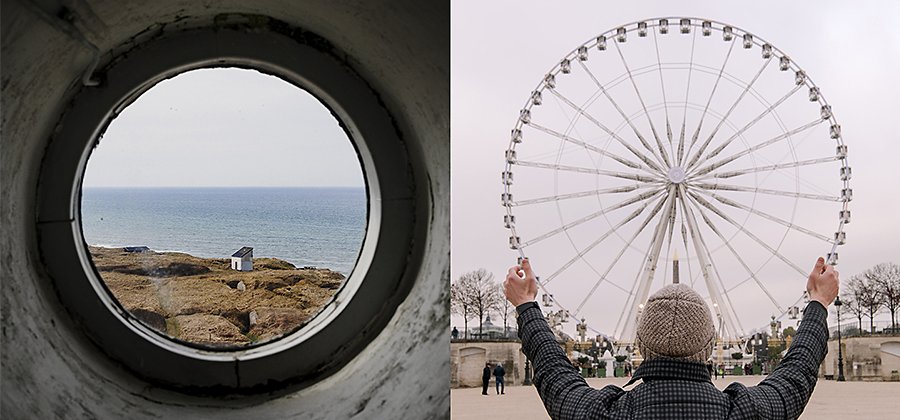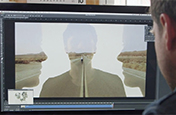Use a match cut to connect scenes.
Learn to transition to your next scene artistically with this film editing technique.

What’s a match cut?
A match cut is an edit in cinematography that uses elements of one scene in the transition to the next scene. The purpose is to create a visual match for different scenes that are not inherently linked, like scenes set in different locations, by having a second shot that — in some way — mirrors the first.
Match cuts are a popular technique in film and video editing. Notable examples of match cutting include shots from films like Citizen Kane, Lawrence of Arabia, Stanley Kubrick’s 2001: A Space Odyssey, and Alfred Hitchcock’s Psycho.
“It’s useful for when you are doing something in one shot, and you know that your next shot is going to involve something moving in the same direction or the same position in the frame as the one previous,” says videographer Nick Cann. “So when there is transitioning, it looks very smooth. It’s effortless for the viewer to watch because everything seems to be flowing flawlessly.”
Match cutting doesn’t have to be just for movement. It can also be used to illustrate the passage of time, as in a montage. Or it can also be used to connect similar shapes with the same frame composition, like a TV that segues into a window in the next scene.
Find your match.
There are three different types of match cuts used in filmmaking:
Graphic match cuts
Also known as visual match cuts, these transitions connect two different scenes with similar visual styles, through colors, shapes, or patterns.
“If a ball is coming toward the screen, it would fill the frame, and the next shot would have to be something similar like a tire,” says Cann. “Even though it’s two completely different scenes, it’s something similarly shaped, moving in a similar direction, and is very satisfying when you see it because the frame composition is almost exactly alike.”
Even if the objects aren’t exactly alike, a match cut between two different things can be symbolic. The famous close-up shots of Marion’s lifeless eye and the water circling the drain in the shower scene in Psycho are one great example of a match cut.
Action match cuts
These cuts are achieved when two consecutive scenes are tied together using comparable motion. They are generally used between shots in the same scene, like in a fight sequence to heighten the action further. One of the most famous examples of an action match cut is in 2001: A Space Odyssey, where a primate throws a bone into the air. The next shot shows a similarly shaped spaceship, illustrating the progress of humanity and the passing of time between two scenes with one transition.
Audio match cuts
Also called a sound bridge, this edit uses matching sound effects on either side of a transition — a single shared sound between the two scenes. There are two common sound transitions: the J-cut and the L-cut. In a J-cut, the first scene’s sound is used in the next. In an L-cut, the second scene's audio is heard before the images appear. “It's a very subtle way of moving along your storyline without being too forceful,” Cann says.

A clear-cut plan.
In pre-production, think over what type of match cut will enhance the mood of your footage. Research different match cuts by other filmmakers, and note what strikes you. Then apply it as inspiration for your work. Make sure you storyboard your ideas and create a shot list first to facilitate easier editing in post-production.
“Without a shot list, once you get to actual filming, you’ll get confused, and it’s not going to look the way you hoped,” Cann states. “So storyboard, get your shot list, make sure you know which way things are moving or what’s going to be the subject matter in the frame you’re going to match, and then in the next cut, make a note about that so they look similar.”
Create work that’s a cut above.
Once it’s time to edit, let Adobe Premiere Pro make your work as sharp as possible. With Scene Edit Detection, quickly identify cut points for your footage automatically to make it even easier to add your adjustments and modifications.
Save time on your sound bridge with Adobe Stock, featuring hundreds of sound effects that can be searched, previewed, licensed, and downloaded all within the Essential Sounds panel.
The best tools can help you easily take advantage of artistic choices like match cuts to take your films and videos to the next level.
You might also be interested in…
Establishing shots are crucial because they tell us where, and often when, the action is happening.
Understanding camera shots in film
Explore the most common camera shots, and learn when and how to use them to greatest effect.
Learn this useful editing technique for weaving together action in two or more different scenes.
Heighten the artistry, efficiency, and emotional depth of your work with these useful techniques.
Get Adobe Premiere Pro
Create flawless productions with the industry-leading video editing software.
7 days free, then US$ 22,99/mo.



